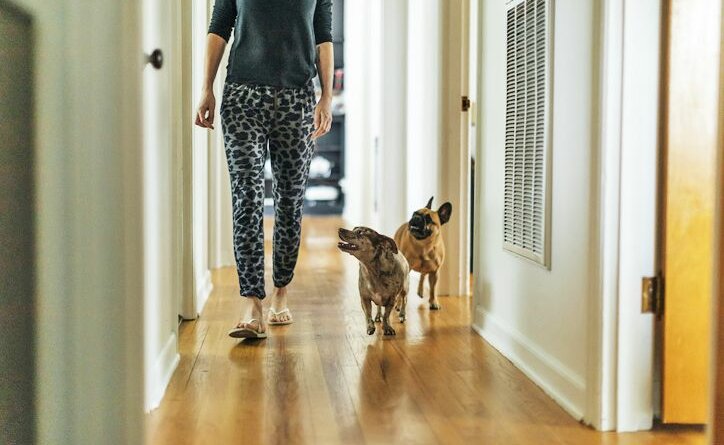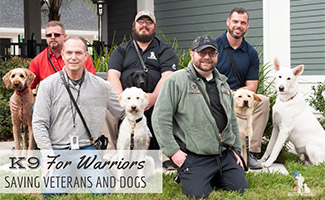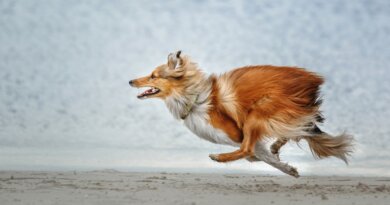Why Does My Dog Follow Me Everywhere?
Does your dog suffer from FOMO? Is he your four-legged shadow around the house? Whether you find his constant following you and staring at you endearing or potentially annoying, we’re here to assure you that it’s normal and, in most cases, nothing to worry about.
Dogs are highly social creatures. Research shows dogs bond with humans in ways other canines do not. Plus, they’re masters at learning what works to help them get what they want, and they can be quick to figure out our daily patterns. All this, plus some natural breed tendencies, help explain why some dogs tend to follow their owners around the house. The most common reasons include:
- Dogs enjoy companionship. That dogs are such social animals is what makes them such wonderful companions. Research reveals dogs possess a genetic mutation that makes them predisposed to being friendly with humans in ways other canines are not. This makes it easy to develop mutually rewarding relationships with the dogs in our lives.
- Breed traits. In developing breeds of dogs, different traits are selected based on their perceived usefulness and desirability. Breed descriptions – especially among breeds developed to work in partnership with man – are full of words like “loyal,” “active,” “curious,” “intelligent,” etc. These are all traits that make it more likely dogs will carefully observe our behavior and want to be part of the action.
Often, dogs follow us because they’ve learned our patterns and know something fun is imminent. If your morning routine consists of getting out of bed, going downstairs, making coffee, going back upstairs to change clothes, and then going for a walk, there’s a good chance your dog has learned your pattern of behavior and follows you in eager anticipation of the morning walk.
- We reward the behavior. On top of a dog’s natural tendency to enjoy being with us, we often reinforce their affiliative behavior, often without knowing we’re doing it! Dogs, as social companion animals, love attention. The simple act of speaking to your dog or reciprocating his stare – making eye contact and giving him your attention – is rewarding for most dogs. And of course, when they follow us into the kitchen, the odds of receiving a tasty morsel are high!
- Inability to settle. Some dogs have a harder time developing an “off-switch” and shadow our every move at home because they don’t know how to relax and self-entertain. This can be common in curious puppies and adolescent dogs of more active breed types. Teaching a dog to settle – the fine art of relaxing – is an important lesson. It’s also a lesson that, in many dogs, can help prevent separation distress issues by teaching that it’s OK to be away from their primary attachment figure. When I get a new puppy or adult dog, one of the first skills I work on is how to be calmly confined (with the help of a crate, exercise pen, or baby gate) in another room while we’re all home.
- In some cases, your dog may be closely shadowing your every move due to anxiety. This can include situational anxiety (such as during thunderstorms or fireworks, when your dog is seeking comfort), or in more generalized cases of separation anxiety, when your dog recognizes your departure pattern and begins to get anxious in advance of you leaving the house. Prolonged anxiety is unhealthy for both pets and people, so if you believe your dog is suffering from separation anxiety, it’s a good idea to consult a positive-reinforcement trainer or veterinary behaviorist for help.





